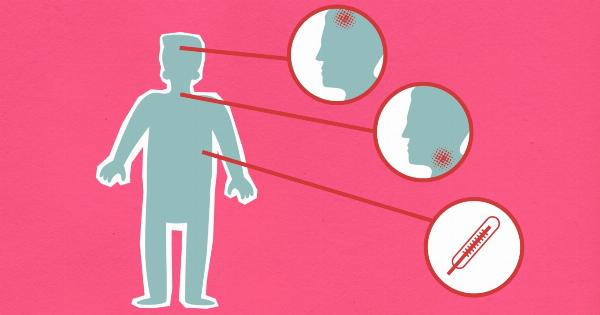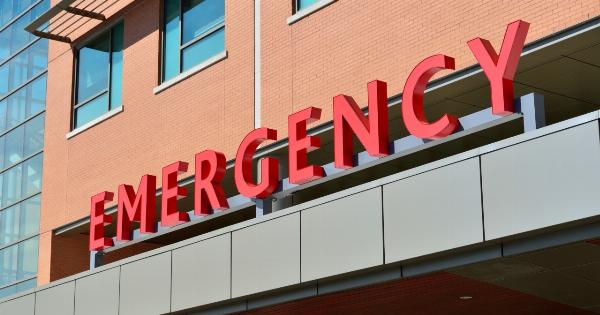Arteriosclerosis, also known as hardening of the arteries, is a condition characterized by the narrowing and loss of elasticity in the walls of arteries.
This condition can lead to various cardiovascular complications and increases the risk of heart attacks, strokes, and other serious medical conditions. Identifying symptoms of arteriosclerosis is crucial for early detection and treatment. In this article, we will explore the common signs and symptoms of arteriosclerosis, as well as discuss its causes and available treatment options.
What Causes Arteriosclerosis?
Before diving into the symptoms, let’s briefly discuss the causes of arteriosclerosis. The main underlying cause of this condition is the accumulation of plaque within the arterial walls.
Plaque consists of fatty substances, cholesterol, cellular waste products, calcium, and other debris that build up over time.
As this plaque builds up, it can restrict blood flow and cause inflammation and damage to the arterial walls.
The body’s natural healing response tries to repair this damage, but it can also lead to the formation of scar tissue and further narrowing of the arteries. Over time, the narrowed arteries can become blocked completely, leading to serious cardiovascular events.
Common Symptoms of Arteriosclerosis
Arteriosclerosis often develops gradually and may not produce noticeable symptoms in its early stages. However, as the condition progresses, certain signs may become apparent.
It is important to be aware of these symptoms and seek medical attention if you experience any of the following:.
1. Chest Pain (Angina)
One of the most common symptoms of arteriosclerosis is chest pain, also known as angina. This pain is typically experienced as a tightness, pressure, or squeezing sensation in the chest. It may radiate to the arm, shoulder, jaw, or back.
Angina is usually triggered by physical exertion, stress, or exposure to cold temperatures.
2. Shortness of Breath
As arteriosclerosis progresses and blood flow becomes more restricted, it can lead to shortness of breath, especially during physical activity or exertion.
The reduced oxygen supply to the heart and other organs can cause a feeling of breathlessness, even with mild activity.
3. Fatigue and Weakness
Arteriosclerosis can cause chronic fatigue and weakness. The narrowed arteries struggle to deliver an adequate supply of oxygen and nutrients to the body’s tissues and organs, leading to feelings of exhaustion and overall weakness.
This symptom may be more pronounced after physical activity or during times of stress.
4. Cold or Discolored Extremities
Due to reduced blood flow and narrowed arteries, individuals with arteriosclerosis may experience coldness or discoloration in their extremities, such as hands and feet. The affected areas may appear pale or bluish in color.
This symptom is particularly noticeable in colder weather or during periods of decreased circulation.
5. Erectile Dysfunction
In men, arteriosclerosis can contribute to erectile dysfunction. The restricted blood flow to the penis can result in difficulty achieving or maintaining an erection.
This symptom often serves as an early warning sign of cardiovascular issues and should not be ignored.
6. High Blood Pressure
Arteriosclerosis can lead to increased blood pressure due to the narrowed arteries and reduced blood flow. Hypertension, or high blood pressure, can further damage the already compromised arteries, creating a vicious cycle.
Regular monitoring of blood pressure is essential to detect and manage this symptom.
7. Cognitive Impairment
In some cases, arteriosclerosis can affect the blood vessels that supply the brain, leading to cognitive impairment. This can manifest as memory loss, confusion, difficulty concentrating, or even dementia.
These symptoms should be evaluated by a healthcare professional to determine the underlying cause.
8. Leg Pain (Claudication)
Claudication refers to leg pain or cramping that occurs during physical activity due to inadequate blood supply. Arteriosclerosis can cause this symptom as the narrowed arteries struggle to deliver enough oxygen to muscles in the legs.
The pain usually subsides with rest.
9. Stroke
If an artery becomes completely blocked by a blood clot or a piece of plaque that breaks off from the arterial wall, it can result in a stroke.
Common symptoms of a stroke include sudden numbness or weakness on one side of the body, difficulty speaking or understanding speech, vision problems, severe headache, and loss of balance or coordination. Immediate medical attention is crucial in the event of a suspected stroke.
10. Heart Attack
When an artery supplying the heart with blood becomes severely blocked, it can lead to a heart attack.
Typical symptoms of a heart attack include chest pain or discomfort, shortness of breath, nausea or vomiting, upper body discomfort, cold sweats, and lightheadedness. Prompt medical intervention during a heart attack is vital to minimize damage to the heart muscle.
Treatment Options for Arteriosclerosis
Once arteriosclerosis is diagnosed, the primary goal of treatment is to prevent further progression, alleviate symptoms, and reduce the risk of complications.
The appropriate treatment approach will depend on various factors, including the severity of the condition, the presence of other medical conditions, and overall health. Here are some common treatment options:.
1. Lifestyle Changes
Adopting a heart-healthy lifestyle can significantly slow down the progression of arteriosclerosis.
This includes eating a balanced diet low in saturated and trans fats, quitting smoking, engaging in regular physical activity, maintaining a healthy weight, and managing stress levels.
2. Medications
Several medications can be prescribed to manage the symptoms and underlying causes of arteriosclerosis.
These may include cholesterol-lowering medications, blood pressure medications, blood thinners, and medications to control other risk factors such as diabetes or excessive blood clotting.
3. Angioplasty and Stenting
In some cases, a procedure called angioplasty may be performed to open up narrowed or blocked arteries. In this procedure, a catheter with a small balloon attached is inserted into the affected artery and inflated to widen it.
A stent, a small mesh tube, may be inserted to help keep the artery open and improve blood flow.
4. Bypass Surgery
In more severe cases, bypass surgery may be necessary.
During this procedure, a healthy blood vessel is taken from another part of the body and used to create a detour around the blocked or narrowed artery, allowing blood to flow freely to the heart or other affected area.
5. Lifestyle Support
After diagnosis, individuals with arteriosclerosis may benefit from lifestyle support programs that provide education, counseling, and ongoing monitoring.
These programs aim to empower patients to make positive lifestyle changes and adhere to necessary treatments.
Conclusion
Arteriosclerosis is a serious condition that can have life-threatening consequences. Identifying its symptoms early is crucial for timely diagnosis, effective treatment, and improved outcomes.
If you experience any of the symptoms mentioned in this article or have concerns about your cardiovascular health, it is essential to consult with a medical professional.




























